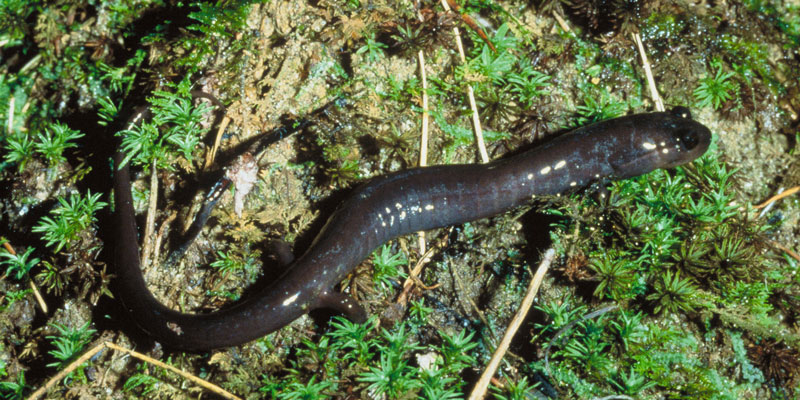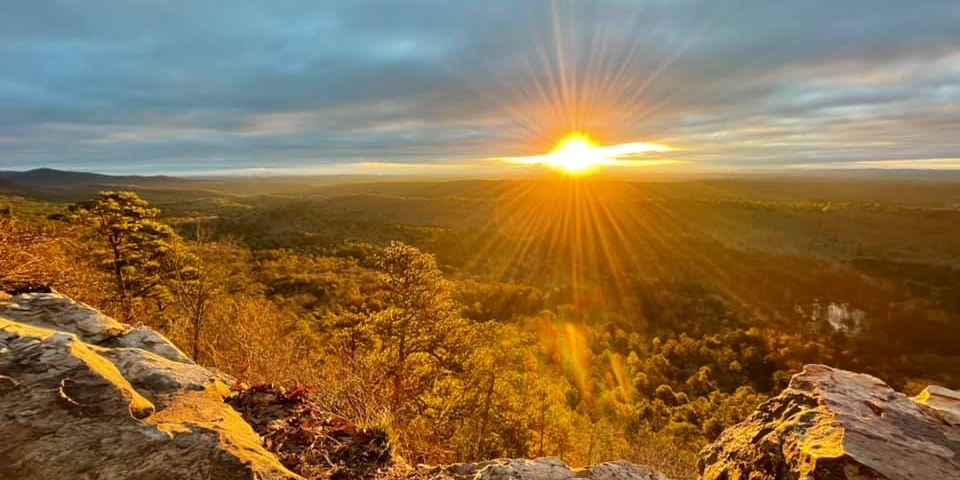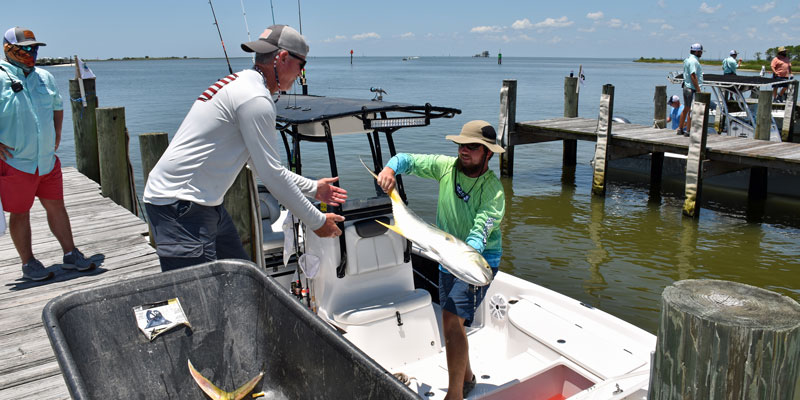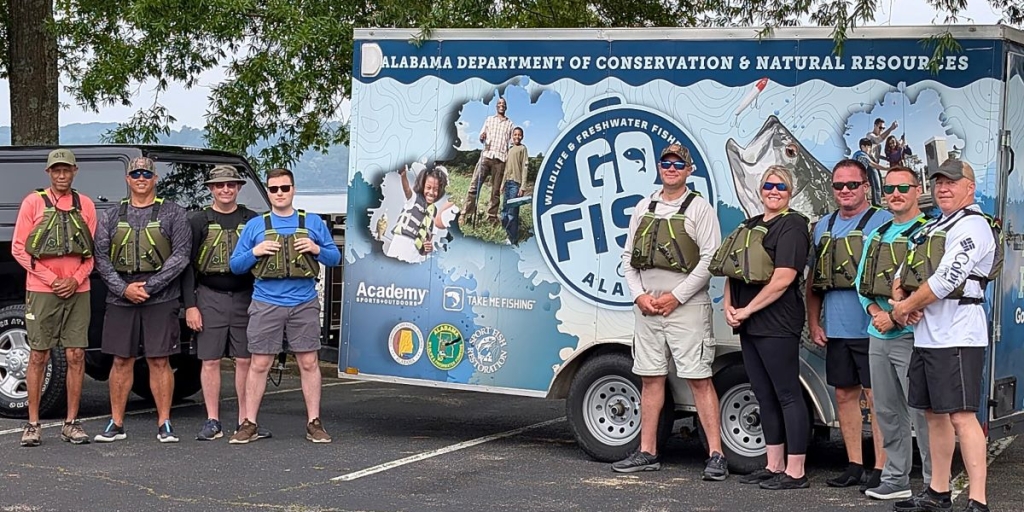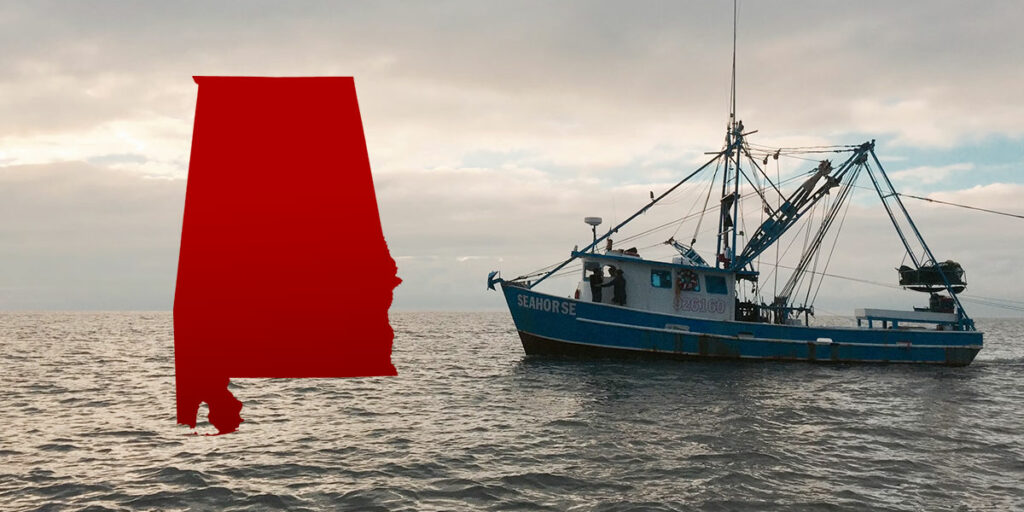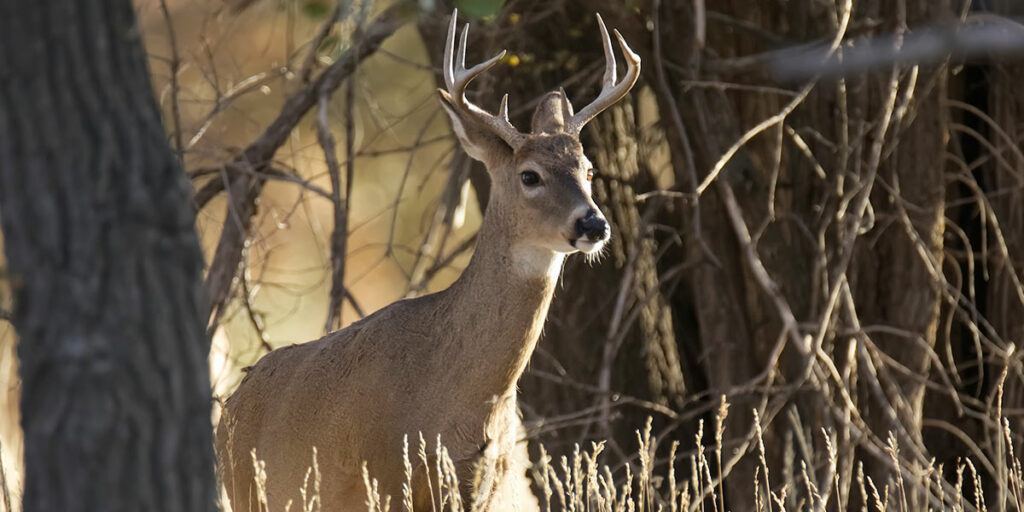A significant step in protecting an amphibian species that only lives in Alabama was celebrated last week at the Forever Wild Red Hills Complex in Monroe County. However, the latest acquisition of almost 5,000 acres of Red Hills salamander habitat comes with many more benefits, including public recreational opportunities like additional hunting and fishing.
Representatives from the Alabama Department of Conservation and Natural Resources (ADCNR), the U.S. Fish and Wildlife Service (FWS) and The Nature Conservancy toured the Red Hills salamander’s specific habitat found only in steep bluffs in Alabama’s Red Hills region of Conecuh, Covington, Crenshaw, Butler, Monroe and Wilcox counties.
“This acquisition by the Alabama Wildlife and Freshwater Fisheries (WFF) and Forever Wild through the U.S. Fish and Wildlife Service is the latest in the string of acquisitions that started a little more than 10 years ago,” said Chris Blankenship, ADCNR Commissioner. “It now totals a little more than 11,000 acres. I think it’s important to note that we’re not done. Our staff in Wildlife and Freshwater Fisheries and State Lands, through Forever Wild, is continuing to work with the Alabama Forestry Commission and others to continue to add to the critical habitat that is in public ownership here.”
Blankenship said a tour of the complex this summer with WFF’s Chuck Sykes and Doug Deaton made him realize what makes the Red Hills region special.
“To get to see the steep hillsides that make the home of the Red Hills salamander and see how unique that habitat is here in Alabama was special,” Blankenship said. “This is a unique place.
“This project is proof that partnerships between state and federal agencies, conservation groups and industry are vital to conservation efforts throughout the country. We are grateful for the assistance Director Leo Miranda and everyone with the U.S. Fish and Wildlife Service have provided to permanently protect this critical habitat and provide additional public hunting opportunities.”
Leo Miranda, Southeast Regional Director for the U.S. Fish and Wildlife Service, said the amount of the grant used for the addition to the Red Hills salamander habitat is unprecedented.
“This is the largest Section 6 (Recovery Land Acquisition) proposal that has been funded in this region,” Miranda said of the $9 million grant acquired through Endangered Species Act funding. “That’s a big deal. The Alabama Field Office staff are rock stars. We were able to get support all the way to Washington, D.C., and nobody had any hesitation on this project.
“We have a vision statement in our region. The first word in that vision statement is ‘together.’ Together is the only way we can accomplish projects like this. A big part of that vision is together we will connect lands and waters to sustain fish, wildlife and plants. That’s what we are doing here. How do we do it? By being visionary leaders, bold innovators and trusted partners.”
Other trusted partners in the acquisition include The Nature Conservancy, Conservation Resources and the Brown-Schutt Trust. The land acquisitions are known as the Red Hills Brown-Schutt Trust tract and the Red Hills Flat Creek Phase III tract. The tracts are located near the community of Franklin in Monroe County, Alabama, and join the 6,140-acre Forever Wild Red Hills Complex in the effort to increase the amount of protected salamander habitat.
Director Miranda said the Endangered Species Act provides benefits far beyond the species that are being protected.
“We use Endangered Species Act dollars to conserve land, but those lands are also supporting outdoor recreation like hunting and fishing,” he said. “Some people say those are incompatible – threatened and endangered species and hunting. No! They go together, and this area will be open in the near future to outdoor recreation and hunting. That is a top priority for me. These two activities are compatible and necessary, because if we don’t get people out enjoying nature by hiking, fishing and hunting – especially now with the COVID situation – we will not get those people to support what we do.”
The habitat protection also benefits other at-risk species like the Bachman’s sparrow, red-cockaded woodpecker, gopher tortoise, southern hognose snake, coral snake and eastern fox squirrel.
The Red Hills region’s steep slopes are covered in mixed hardwood and provide the shade and moisture needed for the salamander to survive. The translucent, purple-hued amphibian spends most of its time in a burrow, venturing out at night to prey upon small insects and earthworms. The Red Hills salamander, one of the largest lungless salamanders in the world, has been listed as federally threatened since 1977 and has been Alabama’s official amphibian since 2000.
“The Nature Conservancy has been working for 20 years with our partners to protect the unique habitat at the Red Hills of Alabama,” said Mitch Reid, the conservancy’s director in Alabama. “We are thrilled to celebrate the conservation of over 11,000 acres, and the opportunity to open this land to the people of Alabama. We look forward to continuing this work and to bringing new partners into this worthwhile project.
“One of the key messages here is that we can have conservation that is for people and nature. We talk about this not being over. One of the things I’m doing at The Nature Conservancy as state director is really trying to bring the focus of what we have here in Alabama to the international focus. The Red Hills is part of that. The Alabama River is part of that. The Mobile-Tensaw Delta is part of that. We’re really starting to leverage the international recognition of what this place means for the world.”
Drew Nix, former WFF employee, and Steve Northcutt of The Nature Conservancy remembered the genesis of the Red Hills conservation effort.
“It all started after a Forever Wild Board meeting,” Northcutt said. “We were standing around talking about areas we needed to protect. We were discussing how we could get federal funds to help Forever Wild.”
Nix’s wife Ericha, also a WFF employee, started writing grant proposals for the acquisition of the Red Hills habitat, and that work culminated in last week’s celebration.
Director Sykes thanked all his staff for their contributions in making the conservation plan come to fruition.
“This is a big deal,” Director Sykes said. “Hopefully, one day when we get finished with this, we can delist a species. That is a milestone in anybody’s career. But, we are also able to provide additional public hunting and recreational access. This is a great win for this area. Outdoor recreation funds a lot of these counties. Like the Commissioner said, it’s not over. We have a lot more to do.”
Commissioner Blankenship added, “I think this is a great example of so many people of different walks of life and groups working together to do this. I think this is a great road map for what we can do in the Perdido River area, how we can do something in north Alabama in the Paint Rock River Valley as we continue to protect critical habitat in the state and provide more public access.”
For more information, visit https://ecos.fws.gov/ecp/
Learn more about the Forever Wild Red Hills Complex at www.alabamaforeverwild.com/
David Rainer is an award-winning writer who has covered Alabama’s great outdoors for 25 years. The former outdoors editor at the Mobile Press-Register, he writes for Outdoor Alabama, the website of the Alabama Department of Conservation and Natural Resources.




